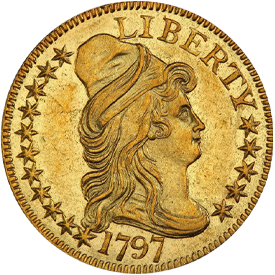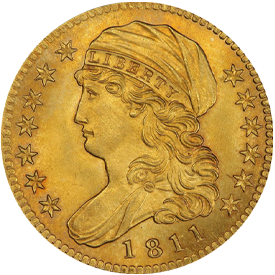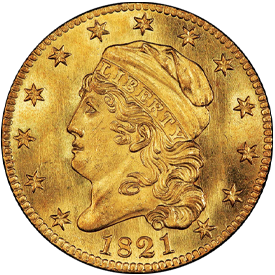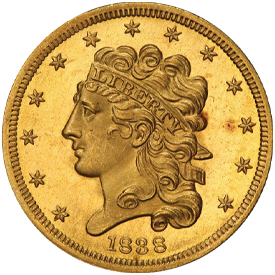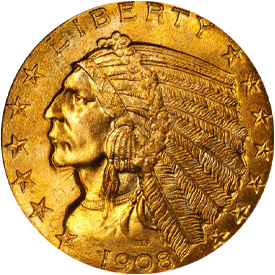The Half Eagle was one of the three original gold denominations authorized in the Mint Act of 1792, and enjoyed the most consistent production run of any gold denomination with no coins produced in only three years from 1795 through 1916: 1801, 1816 and 1817. This nearly unbroken run allows the collector to build a comprehensive type set that illustrates all the basic designs used on U.S. gold coins. Of course, acquiring the first type, the Capped Bust Right Small Eagle (1795-1798) will not be cheap, but enough quantities exist that given sufficient funds, an example can be acquired without years of searching.
Forming a complete type set is effectively as far as one can go however, as a complete date set is essentially impossible due to extensive melting of these coins during the 1830s when their bullion value exceeded their face value on the international markets. For example, the 1822, of which 17,796 were made, is known today by only three examples – two of which are permanently impounded in museums. Likewise, the 1815, 1825/4, 1828/7, 1829 and 1832 Curved base 2 are all prohibitively rare with five or fewer pieces known of most of these.
The effort gets no easier after 1839 either, for in the Liberty Head series, such dates as the 1854-S (two known), 1861-D, 1864-S, 1870-CC and 1875 all will require plenty of patience and money! Even in the Indian series (1908-1929) one encounters the 1909-O and the 1929, both of which will require a five-figure check in higher grades.
Despite the near-impossibility of completing a date and mintmark set of half eagles, they remain popular, and after 1878, most issues are somewhat available and affordable.
